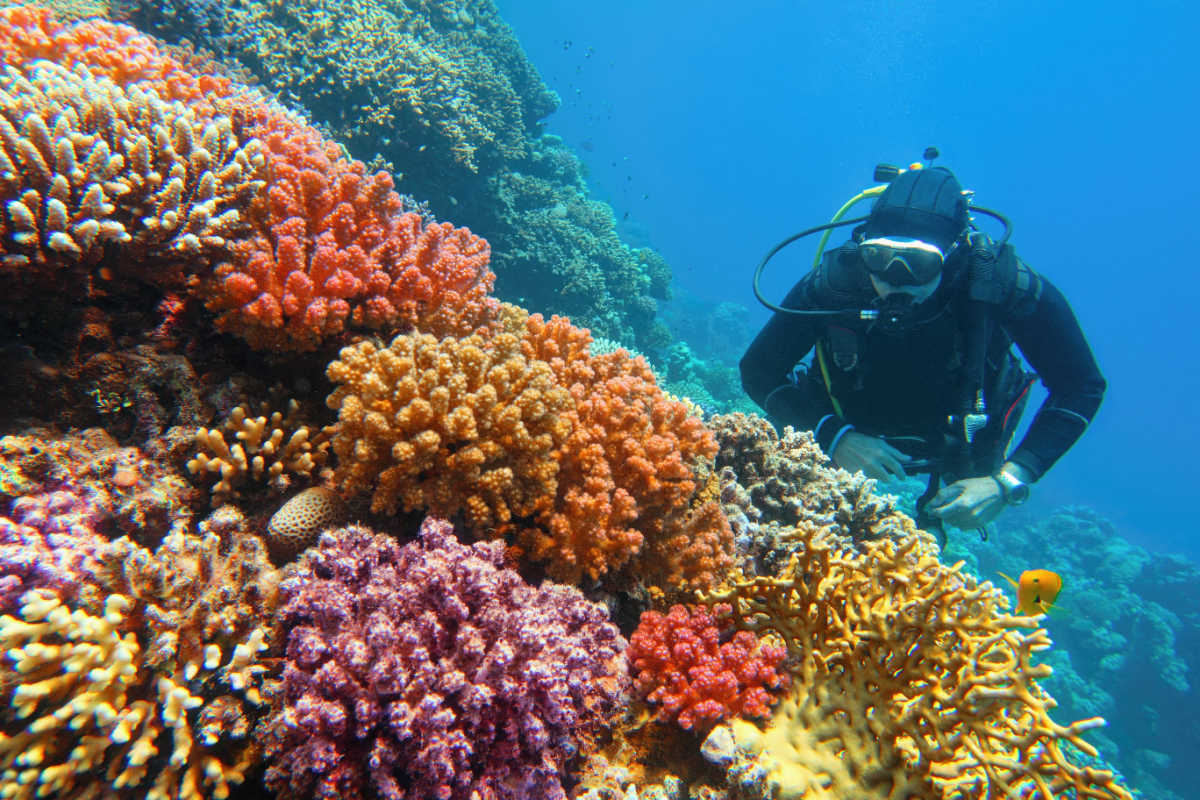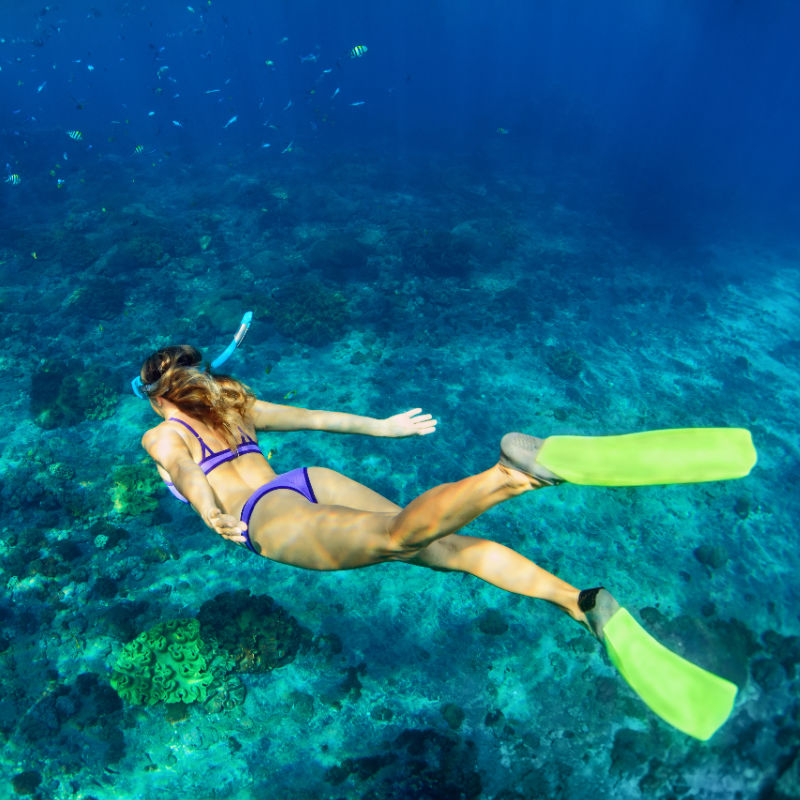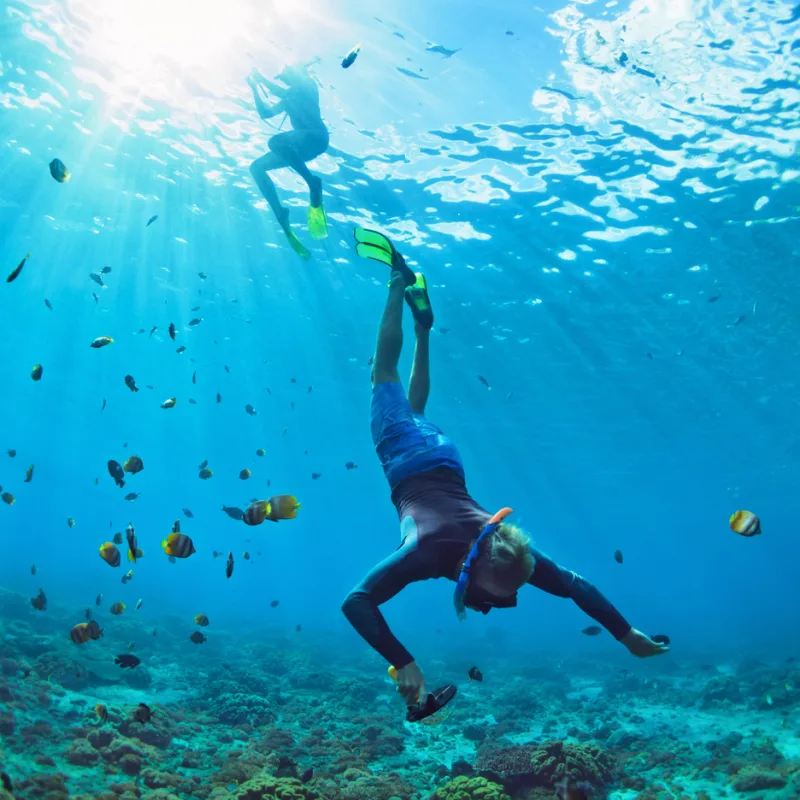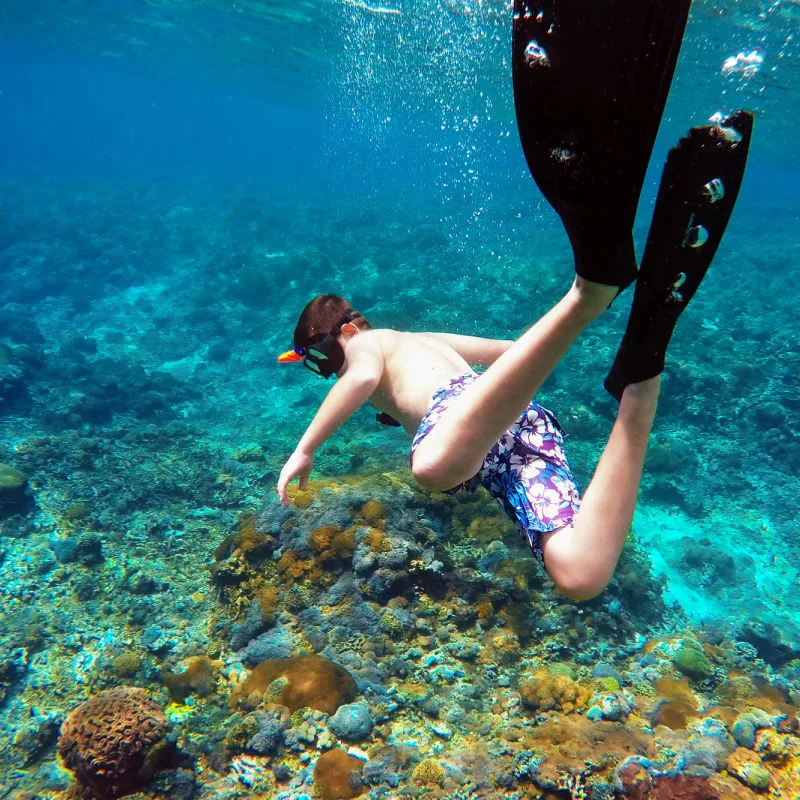Tourism leaders in Bali are seeking to promote undiscovered diving and snorkelling sites in the north of the island.
As the province’s most popular dive sites become ever more crowded, conservationists and tourism leaders are seeking to create more snorkeling and diving experiences that wow tourists and reduce harm to the fragile marine ecosystems surrounding Bali.

It is widely acknowledged that North Bali is an untapped gem in the tourism sector.
With stunning coastlines and dense tropical jungles home to stunning waterfalls, panoramic views, and more, North Bali offers tourists the chance to experience the picture-perfect side of the island.
As diving and snorkeling are increasing in popularity with both marine enthusiasts and the average holidaymaker, leaders are keen to ensure that this part of the tourism sector is sustainable for all involved.
Moving the focus of diving and snorkeling tours towards North Bali and away from areas like Nusa Penida could be the answer.
@laraque24 Amed is one of the best places to snorkel in Bali! Offering a stunning coral reef and marine life. #seaturtle #snorkel #sea #ocean #bali #travel #fyp #foryoupage ♬ Outro – M83
Speaking to reporters the Head of the Bali Province Maritime and Fisheries Service, I Putu Sumardiana, explained “The expansion of conservation is in Buleleng, namely Pemuteran, Lovina and Tejakula. We have intensively carried out outreach, then in Karangasem too.”
By ensuring that there are more conservation protections in place in North Bali, tourism leaders can work with conservationists to ensure that these areas remain well-managed so that marine life can thrive and that the areas make for engaging and interesting diving.
@lifeofatravelfamily We foubd the best snorkeling in Bali, especially for young kids. This is Amed on the east coast and this was right off the shore! #fyp #snorkellingwithkids #bali #amed #worldtravel #kidswhotravel #travelwothkids ♬ original sound – Mindy
Sumardiana said, “We are still reviewing the capacity of Nusa Penida. We are afraid it will be too overloaded.”
One way in which tourism leaders and conservationists are working in tandem to manage areas that are good for diving and snorkeling is through the collection of conservation and tourism levies. These small fees are collected by tourists who wish to enter protected waters and are invested in conservation measures.
The Bali Provincial Government has imposed these levies for activities in water conservation areas. This is regulated in Bali Regional Regulation Number 7 of 2021 concerning the Third Amendment to Regional Regulation Number 3 of 2011 concerning the Business Services Levy.
@caitriona_b The most incredible experience snorkelling with turtles 🐢🏝️🥥🐠 There are so many amazing snorkelling and diving spots around Indonesia like Gili T and the Komodo islands! If you’re looking for things to do during your trip to Bali, I’d highly recommend trying it out 🤍 #balithingstodo #balirecommendation #baliguide #cangguthingstodo #canggucafe #balirestaurantguide #baliplacetovisit #gilit #gilitrawangan #balitraveltips #restaurantbali #balitravelguide #gilitrawanganlombok #komodoisland #canggubali #cangguplacestoeat #balifood #CapCut ♬ Can I Call You Rose? (Cover) – SOLOMON
These levies are in effect in the Nusa Penida Marine Protected Area and, if Sumardiana plans are supported, would also be introduced in dive sites across the waters off Bulling Regency to help further protect the coral reefs and marine life in these areas.
Bali Provincial Government has increased income by imposing these levies on snorkeling and diving activities in Nusa Penida, Klungkung Regency.
Sumardiana did not confirm the revenue target he wants to collect if the expansion of marine tourism in Buleleng is realized. He added, “We can’t talk about targets yet because we haven’t started yet. What is clear is that we are always trying to add to the targets.”

Marine ecosystems, particularly coral reefs, are incredibly fragile and vulnerable to changes in the wider environment.
Coral bleaching is a serious concern for the coral reefs that surround Bali Province. Indonesian marine conservationist Nyoman Sugiarto spoke to reporters about the devastating mass coral bleaching that can be seen across parts of Bali.
Suigarto, who is from the village of Bondalem in Buleleng Regency, has been overseeing a coral restoration project for over a decade.
In December last year, a mass bleaching event saw his beloved corals destroyed. He told reporters, “It was all white. We were shocked, of course; it also negatively affected the corals we’ve planted. It’s not just the natural ones [affected].”

He added, “We feel that we have the obligation to guard the sustainability of underwater life, especially corals.”
While the mass bleaching event impacted some of the reefs around Bondalem, Buleleng Regency is still home to some of the most impressive, bright, and healthy coral reefs in Bali province, and new conservation protections will help support the ecosystems to thrive further.

Tourists looking to avoid the crowds while diving or snorkeling in Bali should look into dive tours in the north and east of Bali provide, and maybe give Nusa Penida a skip.
However, for tourists who wish to dive in Bali with manta rays, Nusa Penida is the only place where this is possible. Tourists are advised to choose a provider that supports conservation efforts and ethical tourism practices, especially in the Nusa Penida area.
Remove All Ads & Unlock All Articles… Sign up for The Bali Sun Premium

Plan Your Bali Holiday:
Book The Best English Speaking Drivers For Airport Transfers & Tours
Choose From Thousands of Bali Hotels, Resorts, and Hostels with Free Cancellation On Most Properties
Book Cheap Flights To Bali
Don’t Forget Travel Insurance That Covers Medical Expenses In Bali
For the latest Bali News & Debate Join our Facebook Community
SUBSCRIBE TO NEW POSTS
Enter your email address to subscribe to The Bali Sun’s latest breaking news, straight to your inbox.
Discover more from The Bali Sun
Subscribe to get the latest posts sent to your email.

Wayan Mataram
Wednesday 10th of July 2024
Addressing the top three recognized threats to coral reefs and supporting coral reef restoration are now the four "pillars" of the NOAA Coral Reef Conservation Program.
By implementing strategies specific to each of the program's four pillars, CRCP aims to 1) restore and preserve corals; 2) maintain ecosystem functions; and 3) improve coral habitat, water quality and populations of key coral reef fishery species in target areas by 2040. LINK
Wayan Mataram
Tuesday 9th of July 2024
Wayan Mataram comments :"On the subject of coral reef bleaching which are now happening to most of the world coral. A collaboration urgently required amongst nations to at least minimising the exeleration of the damage."
Wayan Mataram
Tuesday 9th of July 2024
WHAT CAUSES BLEACHING? Change in ocean temperature Increased ocean temperature caused by climate change is the leading cause of coral bleaching. Runoff and pollution Storm generated precipitation can rapidly dilute ocean water and runoff can carry pollutants — these can bleach near-shore corals. Overexposure to sunlight When temperatures are high, high solar irradiance contributes to bleaching in shallow-water corals. Extreme low tides Exposure to the air during extreme low tides can cause bleaching in shallow corals. NOAA’s Coral Reef Conservation Program. LINK The Coral Reef Conservation Program is a partnership between the NOAA Line Offices that work on coral reef issues. .... LINK